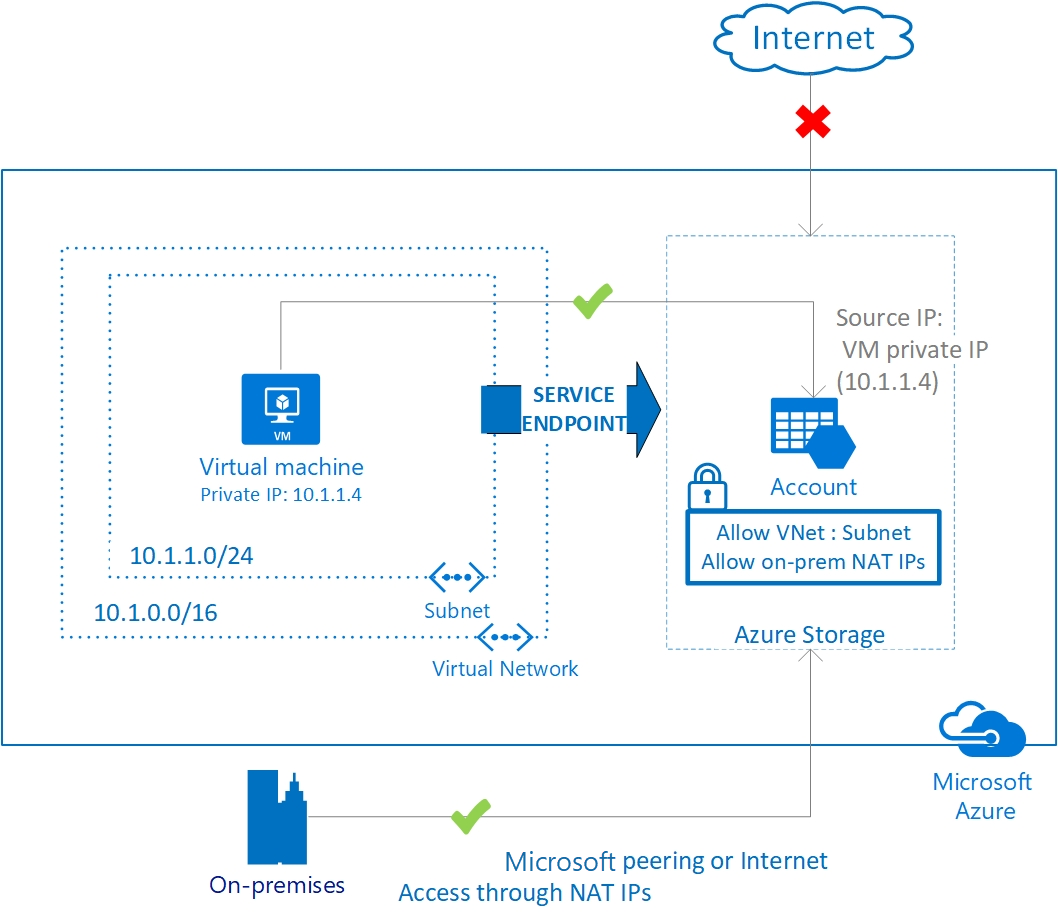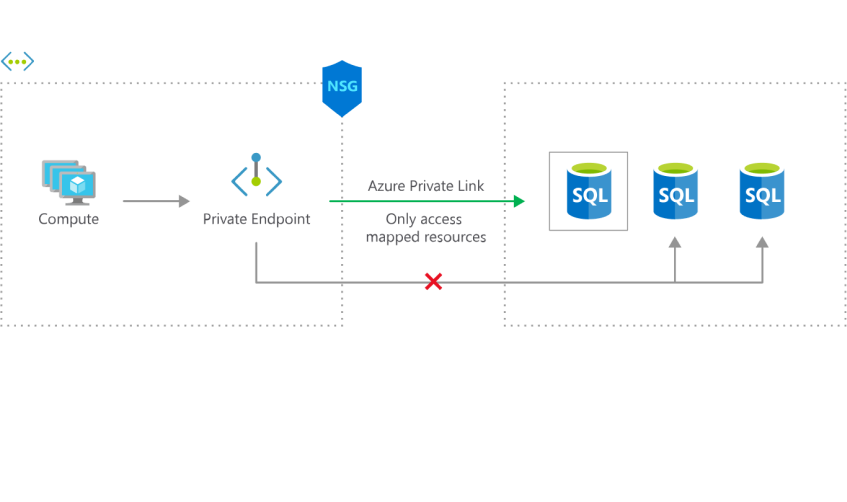A Service Endpoint enables virtual network resources to connect to an Azure service’s public endpoint using private IP addresses, extending the virtual network’s identity to the target resource. This indicates that traffic is routed through the Azure backbone network rather than the internet to reach the service resource. A Private Endpoint makes it possible for virtual network assets to privately connect to other assets as if they were a part of the same network, essentially integrating the target assets into the VNet and routing traffic over the Microsoft Azure backbone rather than the internet.
A Private Endpoint makes it possible for virtual network assets to privately connect to other assets as if they were a part of the same network, essentially integrating the target assets into the VNet and routing traffic over the Microsoft Azure backbone rather than the internet.
In the example below, an NSG blocking outgoing traffic does not prevent virtual machines in a VNet from connecting via an Azure Private Link private endpoint to a specific SQL database as though it were a component of the VNet. Without having to go through the internet, traffic can go from one private IP address in the same VNet to another private IP address thanks to the private endpoint.
– Service endpoint provides a way to access Azure resources over the public internet, while private endpoint provides a way to access Azure resources over a private network connection.
– Service endpoint is less secure than private endpoint because it is accessible over the public internet. Private endpoint is more secure because it is only accessible over a private network connection.
What are the differences?
- Private Endpoint brings PaaS resources right into your VNet, which is the main distinction between these two methods for restricting access unlike service endpoints, which keep PaaS resources outside of your VNet.
- The configuration of Private Endpoint is more difficult. In addition to configuring mappings between your endpoints and your Azure PaaS resources, you must make room for it within your VNet.
- Private Endpoint prevents data leakage and keeps all traffic inside of your VNet, which may be ideal from a security perspective.
- Service endpoints typically deliver better performance due to their easier configuration and use of optimized routes.
Overall, using service endpoints is a quick way to connect a VNet and a service. While Private Links require a more involved setup process, they provide significantly more control and security. Remember that each option only supports a specific subset of Azure PaaS offerings; if the service you’re using is only supported by one service, use that one.
Lastly, Microsoft suggests using Azure Private Link in its documentation for private and secure access to services hosted on the Azure platform.